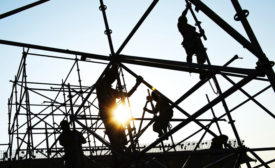News
Massey Ex-CEO Blankenship found guilty in UBB mine blast
Prosecutor: It's a "landmark day" for coal miner safety
December 3, 2015
Never miss the latest news and trends driving the safety industry
eNewsletter | Website | eMagazine
JOIN TODAYCopyright ©2024. All Rights Reserved BNP Media.
Design, CMS, Hosting & Web Development :: ePublishing









